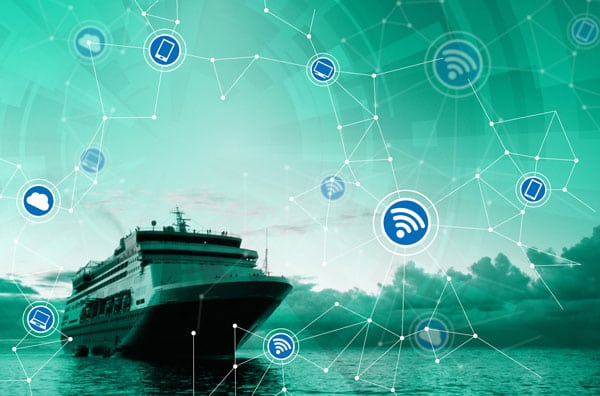Latest News
AI is Key to Future of Maritime Connectivity, But Tech is Still in ‘Infancy,’ Execs Say

Photo: Via Satellite
The satellite industry is hoping that the maritime sector will see a rebound from the COVID-19 pandemic in 2021, not just in the cruise sector, but also in commercial shipping. Connectivity will play a role, particularly how Artificial Intelligence (AI) could be used on connected ships. Satellite and shipping experts say AI, Machine Learning (ML), and IoT (IoT), have the potential to transform maritime connectivity, but the applications are still in the early phases. Greg Martin, SES’s vice president of Maritime told Via Satellite that he believes AI will be important for the satellite industry in this sector.
“The connected ship and the autonomous ship are going to be the standard going into the future, especially when you have less people travelling to the ship, less touchpoints, we are going to drive the connectivity requirements. It is not just autonomous shipping, but IoT [Internet of Things] devices reporting back and having the ability to manage the fuel consumptions. There is going to be a desire to have less people travel to ships and do things. You will see more demand there. We are trying to focus on that and how we serve the industry.”
Jan Hetland, director of the Data Services Division at Telenor Satellite believes that AI and ML – in combination with Internet of Things have the potential to transform many aspects of the traditional shipping industry. Logistics, navigation, maintenance are all key areas that stand to benefit from wider adoption of AI/ML, in turn producing cost savings or greater efficiencies for those who implement it well. According to Hetland, to maximize the potential of AI/ML, a ship must be connected with the outside world, utilizing not just sensor data produced by onboard equipment, but also tapping into databases and other sources of data on land, in real-time.
“This is indeed an important area for the future of shipping, it’s more a question of how quickly will it happen. An example is the area of autonomous shipping. For this to reach its maximum potential there is still years’ worth of international standardization and regulation work to be carried out. Other areas will no doubt be tackled quicker,” he said.
Tore Morten Olsen, president of Maritime for Marlink, another major player in the satellite sector, says AI is a technology that is still emerging. He admits that shipping is not seen as an early adopter, but the principles are being picked up and adapted for the maritime sphere of operations.
“This is happening most clearly in the area of machinery and system maintenance which is moving from reactive when something breaks, to proactive, using data to analyze and predict the health and performance of components. Using AI and machine learning, shipping companies can more accurately estimate the lifecycle of equipment to optimise support and maintenance – and in doing so potentially save substantial amounts of money,” he says. “Digital twin [technology] is another example of AI technology which is an efficient tool to simulate maritime processes in a digital way compared to real life testing.”
But maritime applications for AI are still in the early stages, commented Klaus Bruun Egeberg, head of Maersk Mobility and Connectivity. The company is looking at how it can use satellite-based connectivity, and looking into AI as well. “AI will play a role. The question will be — How mature it is? We are using some of the technologies today. But, it is still in its infancy,” Bruun Egeberg said.
Get the latest Via Satellite news!
Subscribe Now